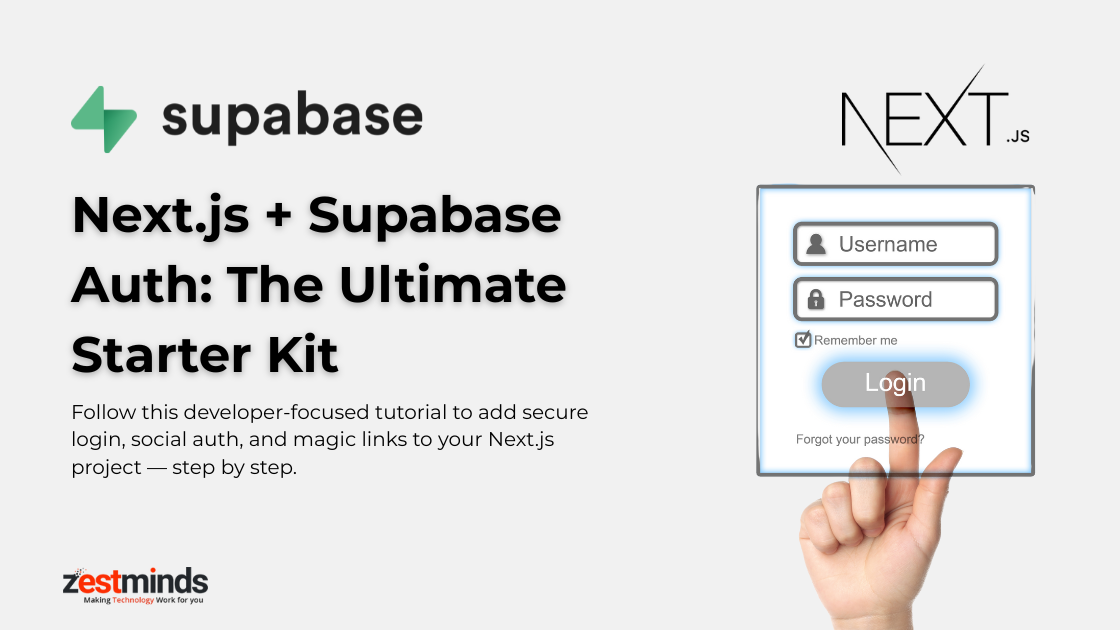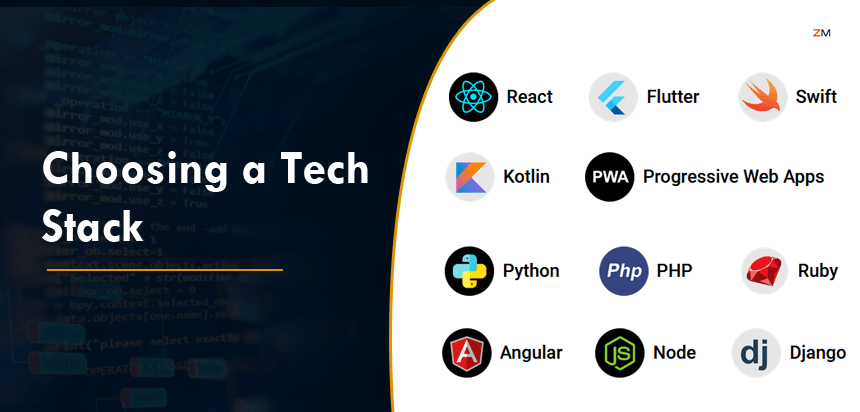Using Supabase Auth with Next.js - A Complete Setup in Just 15 Minutes
Whether you're launching a new project or adding login to your app, authentication shouldn’t slow you down. In this guide, you'll learn how to integrate Supabase Auth with Next.js in just 15 minutes — no backend stress, no complex setup. It’s fast, secure, and perfect for beginners or pros who just want it done right.

Supabase Auth: A Fast Lane to Authentication
If you're building a modern web app in 2025 and still sweating over user authentication, you might be doing it the hard way. Imagine setting up secure email login, social auth, and even magic links without writing server logic or wrestling with OAuth flows. That’s exactly what Supabase + Next.js promises.
Whether you're a solo developer prototyping an MVP or a SaaS founder building the next AI-powered unicorn, this guide will help you set up Supabase Auth with Next.js in under 15 minutes.
Let’s keep things simple, human, and hands-on. If you're interested in building AI chatbots or exploring Retrieval-Augmented Generation, check out our related blogs on AI chatbot development and RAG architecture. No jargon. No 90s-style documentation. Just practical, working code.
Why Choose Supabase for Authentication? (Supabase Authentication Benefits vs Firebase)
Supabase is the open-source Firebase alternative, and it's on fire. Built on top of Postgres, it offers realtime databases, file storage, edge functions, and of course — secure, scalable authentication.
Here’s why Supabase Auth is a smart choice (compared to Firebase, as explored in our AI-powered chatbot future blog):
- Out-of-the-box Email & Password Auth (with passwordless options)
- Social Logins (Google, GitHub, Discord, etc.)
- JWT-based secure sessions
- Built-in Role-based Access Control (RBAC)
- Magic Links for Passwordless Login
- Integrates seamlessly with Next.js, React, Vue, and more
For developers building AI-powered web apps, especially with Next.js, Supabase Auth gives you a fast, secure, and flexible way to handle user sessions.
Prerequisites: Tools You Need Before We Begin
Before diving in, let’s get your toolkit ready:
- Node.js (v18+ recommended)
- A Supabase account (free tier is enough)
- Basic understanding of React or Next.js
- Yarn or npm (your pick)
We’ll be using:
@supabase/supabase-js: The official JS client@supabase/auth-ui-react: For prebuilt auth components- Next.js (App Router or Pages Router, both are supported)
Step-by-Step: Setting Up Supabase Auth in Next.js (Step-by-Step Guide)
Step 1: Create a New Next.js App
npx create-next-app@latest supabase-next-auth
cd supabase-next-authSelect TypeScript when prompted (recommended).
Step 2: Set Up Supabase Project
- Go to Supabase.io
- Log in and click "New Project"
- Choose a name, password, and region
- Once created, head to the Settings > API tab to get your Supabase URL and anon key
Copy those. You’ll need them for the client.
Step 3: Install Required Dependencies
yarn add @supabase/supabase-js @supabase/auth-ui-reactOr use npm:
npm install @supabase/supabase-js @supabase/auth-ui-reactStep 4: Initialize Supabase Client
Create a folder lib/ and a file called supabaseClient.ts:
import { createClient } from '@supabase/supabase-js';
const supabaseUrl = process.env.NEXT\_PUBLIC\_SUPABASE\_URL!;
const supabaseAnonKey = process.env.NEXT\_PUBLIC\_SUPABASE\_ANON\_KEY!;
export const supabase = createClient(supabaseUrl, supabaseAnonKey);And add your .env.local file:
NEXT_PUBLIC_SUPABASE_URL=https://your-project-id.supabase.co
NEXT_PUBLIC_SUPABASE_ANON_KEY=your-anon-keyStep 5: Create the Login Page with Supabase Auth UI
import { Auth } from '@supabase/auth-ui-react';
import { ThemeSupa } from '@supabase/auth-ui-shared';
import { supabase } from '@/lib/supabaseClient';
export default function LoginPage() {
return (
\
\Step 6: Add Supabase Session Provider to Your App
import { SessionContextProvider } from '@supabase/auth-ui-react';
import { supabase } from '@/lib/supabaseClient';
export default function RootLayout({ children }) {
return (
\
{children}
\
);
}Step 7: Protect Routes
import { useSession } from '@supabase/auth-helpers-react';
import { useRouter } from 'next/navigation';
export default function Dashboard() {
const session = useSession();
const router = useRouter();
if (!session) {
router.push('/login');
return null;
}
return \Welcome, {session.user?.email}!\;
}Step 8: Add Logout Button
const handleLogout = async () => {
await supabase.auth.signOut();
};Bonus Features You Can Add
- Magic Link Login (just enable in Supabase dashboard)
- Phone Auth (OTP)
- RBAC Policies in Supabase for multi-tenant SaaS
- Webhook triggers (useful for onboarding workflows)
Supabase Auth + AI: A Perfect Match
Here’s how we use it in AI SaaS apps:
- Protect access to AI endpoints (chatbots, embeddings, APIs)
- Role-based dashboards (Admin vs User)
- Secure API key issuance with Supabase functions
- Session-based analytics (track token usage, limits)
Want to launch your own AI SaaS with secure login and blazing speed? Zestminds builds production-ready AI platforms for startups like yours. Take a look at our AI-powered ride-sharing app case study to see how we blend secure auth and scalable design.
Common Gotchas & Debugging Tips
- Double check
NEXT_PUBLIC_prefix for env vars - Ensure your Supabase URL has
/auth/v1endpoint - CORS issues? Add your localhost domain in Supabase dashboard
- Use browser DevTools to inspect network requests, or refer to Supabase Docs for advanced configuration
Recap: From Zero to Logged-in in 15 Minutes
- Set up Supabase project
- Integrated Supabase Client
- Plugged in Auth UI for login/signup
- Protected routes and handled sessions
You now have a fully working, production-grade authentication system for your Next.js app. This setup not only gets you started quickly but also scales effortlessly as your user base grows, saving development time and simplifying future feature rollouts.
Need Help Scaling This?
Zestminds AI Development Services can help you:
- Build secure AI SaaS platforms
- Implement scalable auth & RBAC
- Optimize Next.js apps for speed and SEO
- Deploy to Vercel or your preferred cloud
People Also Ask
Q1: Is Supabase free?
Yes, for small projects. You get generous limits on the free tier.
Q2: Can I use Supabase Auth with social providers like Twitter?
Yes, Supabase supports Google, GitHub, Twitter, Discord, etc.
Q3: Is Supabase secure for production apps?
Absolutely. It uses PostgreSQL under the hood with JWT-based auth and RLS policies.
Q4: Does this work with Next.js 14+ and App Router?
Yes, the method shown works with the new App Router setup.
Q5: Can I customize the Supabase Auth UI?
Yes, you can style it using ThemeSupa or build your own UI.
Q6: What if I want server-side auth?
Use Supabase’s server-side helpers or getServerSideProps for SSR.
Q7: Can I integrate Stripe for billing along with Supabase Auth?
Yes. Many SaaS products use this combo. Auth for login, Stripe for payments.
Q8: Is Supabase GDPR-compliant?
Yes, and it offers full data control if you self-host.
Q9: Does Supabase Auth support MFA (multi-factor auth)?
Coming soon. For now, use magic links or 3rd party integrations.
Q10: Why use Supabase over Firebase?
Postgres > NoSQL for complex apps. Plus, Supabase is open-source, easier to self-host, and has fewer vendor lock-ins.

Rajat Sharma
About the Author
With over 8 years of experience in software development, I am an Experienced Software Engineer with a demonstrated history of working in the information technology and services industry. Skilled in Python (Programming Language), PHP, jQuery, Ruby on Rails, and CakePHP.. I lead a team of skilled engineers, helping businesses streamline processes, optimize performance, and achieve growth through scalable web and mobile applications, AI integration, and automation.
Stay Ahead with Expert Insights & Trends
Explore industry trends, expert analysis, and actionable strategies to drive success in AI, software development, and digital transformation.


